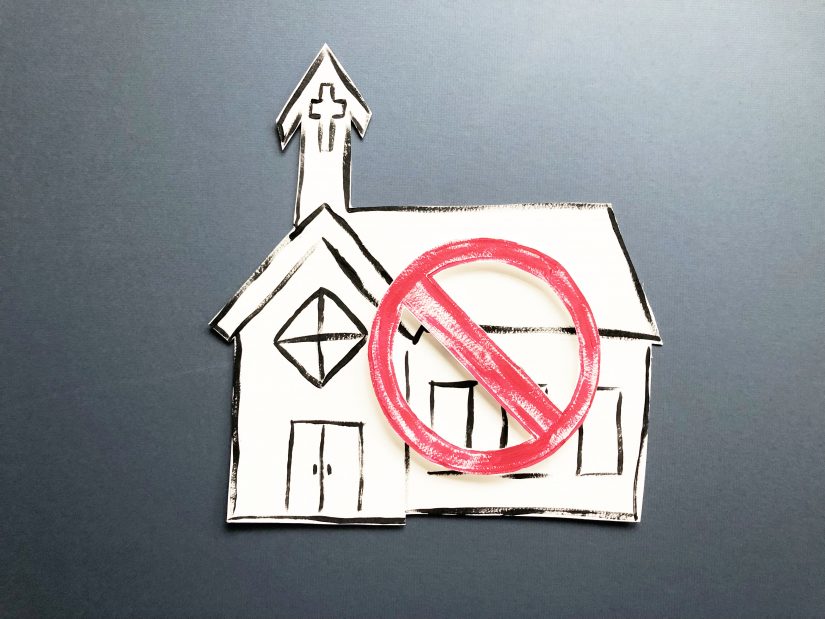Reaching the Unchurched
“Would you go to a block party? Let’s say there’s a block party taking place in your neighborhood. Streets are blocked off. Kegs of beer are set out. A rock band is brought in to perform. Girls turn out in skimpy, provocative clothing. The air is blue with cursing.
So…let me ask you, would you go? Would you go to that?
Of course not! This is a culture you have nothing in common with. Why would you go there? Everything there makes you uncomfortable.
Now turn it around. Would this crowd come into your church to hear an evangelist, or a Christian music group? Of course not! Think about it. Your building and culture is as uncomfortable to them as their block party is to you.
The church must remember that unchurched people are already “scared to death” about coming to church.”(1)
The previous five paragraphs are lifted from the chapter entitled, The Unchurched Don’t Like Church, out of my soon to be published book, The Eye of the Storm.
I determined that some of the things I learned about reaching the unchurched during the several years I produced evangelistic outreach events must be presented.
You may or may not know that we are in a crisis when it comes to the youth of America. I quote from Peter Haas in his book, Pharisectomy:
“Although around 43 percent of Americans claim to go to church, only about 17 to 20.4 percent
actually went to church last weekend. That’s to any kind of church, including one where the gospel
may be absent or hard to find. If you parse that number down to those who
actually attended ‘evangelical or charismatic’ churches,
some put that number as low as 9.1 percent, the majority of whom are baby boomers or senior citizens.
That means most of the young people in America have quit on church.” (2)
Four percent of Millennials (the present youth generation) are born again and Peter Haas, from his research, believes church attendance by this group to a fundamental or charismatic church may be less than one percent.
That spells big trouble for the church of the future. It means it may go extinct.
I have had many conversations with pastors and lay people of the over-fifty generation who say they have a concern, but demonstrate no action that shows they are really concerned. An example is when they ask me how to reach youth and I tell them the first thing they have to do is get out of the church building. There is almost always push back, sometimes they get very upset.
The thinking that all of the church activities must take place in the church building is a huge “sacred cow.” I believe the church building is the biggest hindrance to evangelism.
I know from years of producing youth outreach events, that trying to produce an event in a traditional church building and hoping to draw the unchurched youth, or any unchurched for that matter, is an exercise in futility.
All of our events, with the exception of two, were produced in neutral venues, such as high school gymnasiums, coliseums or sports facilities. While the average event produced by the church draws about ten percent unchurched, some of our events drew up to fifty percent unchurched. That is because the unchurched are five times more likely to attend an event held in a neutral location as they would in a traditional church building.

Over and over again I have seen the church pump a lot of money into an outreach event in which they hope to draw the unchurched, only to draw very few unchurched because they held it in a traditional church building…but they just keep doing it!
Another very common mistake the traditional church makes is to load up the program with Christian performers, and sometimes they put the “evangelist” on the promotional posters. The word “evangelist” will send the unchurched running in the opposite direction. They have no interest in coming to hear an evangelist!
The only thing that draws the unchurched is speakers and performers who have some presence in the national media. Presenters who have made a splash with the national media, who are committed Christians, but do not present themselves as Christian performers, these are the kind of presenters that draw the unchurched.
Many times, pastors are disappointed after one of our events, because those who committed their lives to Christ did not come to their church. The reason is that unchurched young people are so tied into the national media through smart phones that any traditional church is going to seem way behind their culture. Today’s unchurched youth are not going to join something they perceive to be way behind.
There is another huge mistake churches make. They attempt to take the new believer directly from the altar to their church service. That’s a huge shock…too big of a leap! Mark Anderson of Youth with a Mission, produced many events. He says that new believers must be discipled in a home or other non-threatening environment (like a coffee house) for about a year. At that time, they may be ready to attend a church service. We have come to exactly the same conclusion from our experience with events.
Young People prefer to be counseled by someone their own age. At one of our events, after the altar call, the new believers were grouped on one side in front of the stage and the counselors on the other. The counselors were instructed to raise their hands and the new believers were instructed to go pick a counselor. All of the teenagers picked a counselor who was also a teenager.
New believers should be contacted within 24 hours. After that time the numbers of new believers you will lose, will significantly increase. New believers are intimidated by pastors. They should be contacted after the event by lay people. Ed Stetzer in his book, Planting Missional Churches, reports that follow-up is 50 percent less effective when new believers are contacted by pastors, as opposed to lay people.
Why have we lost almost the entire present generation of youth in America?
George Barna warned the church that this would happen in his first book, The Frog In The Kettle, written in 1990. He said that the church stays within its walls, does its thing, and doesn’t pay any attention to what’s going on in the culture of the world around them. I think that’s exactly what happened. Most traditional churches are a decade behind the culture of the world outside their walls…and the unchurched just aren’t interested in something that is way behind.
William Booth, the great founder of the Salvation Army, was successful because the traditional church pushed him out. They no longer wanted him to preach in their “lukewarm” churches because he challenged people to commit their lives to Christ, which was offensive to them.
He stated that since unchurched would not darken the door of a church he would preach in other venues…theatres, public halls, and the open air.
Unfortunately, music is such a big issue to church people. The music they like and insist is “God’s music,” the unchurched don’t like, because it is significantly behind the times. Booth used big band music to draw the unchurched and it worked amazingly well. The church, of course, would not have tolerated this music inside their walls. When Booth was criticized by church people for his music he said, “Why should the devil have all the good music?”
Substance Church of Minneapolis has a youth church. 70 percent of their attendees are under 35. Their demographics are the opposite of traditional churches, which proves we can reach youth today, if we’ll just move from outdated methods that don’t work. Substance started their services in neutral locations, high school auditoriums, and they made every effort to be in step with the youth culture. For years they were one of the fastest growing churches in America and on their tenth anniversary, they were running roughly 3000.
I believe the answer to the youth crisis in America is that pastors leave the old traditional methods that don’t work and dare to step out and plant churches for youth in the tradition of Substance Church.
(1) Ed Stetzer, Planting Missional Churches (Nashville, Tennessee: B & H Publishing Group, 2006), 238.
(2) Peter Haas, Pharisectomy (Springfield, MO: Influence Resources, 2012), xvii.
And He said to them, “Go into all the world and preach the gospel to every creature.
He who believes and is baptized will be saved; but he who does not believe will be condemned.”
Mark 16: 15-16
George and I wish you all a blessed Resurrection Sunday.
God bless you.
In His Service,

George and Lorraine Halama
All contributions are tax deductible
Artwork and photo by Lorraine

